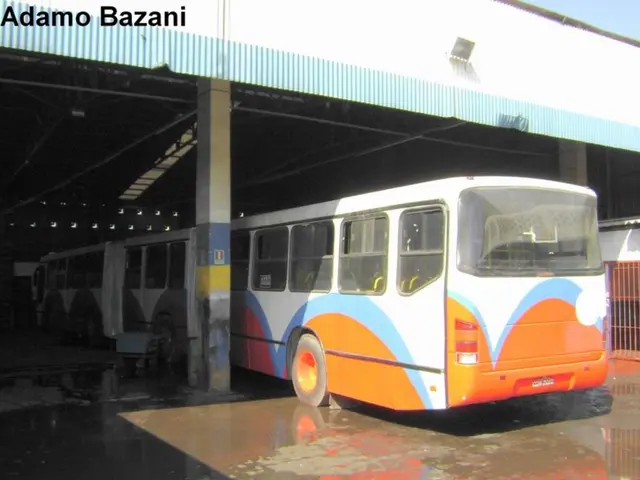Engineered Lungs Equipped with Undamaged Blood Vessels Narrowly Approach Materialization
In a groundbreaking development, researchers at Columbia University have created the first functional vascularized lung scaffold. This innovative creation preserves intact blood vessels, addressing one of transplantation's most persistent challenges: rejection.
The approach involves using a patient's own stem cells to regrow the epithelial lining on a donor scaffold, offering a potential lifeline for millions suffering from chronic lung conditions. The breakthrough suggests a path forward where none existed before, offering hope to those who have been waiting for a solution.
The scaffold replicates the native lung's complex architecture, including its vascular and airway structures, allowing it to support lung cells and maintain blood flow. It is created by decellularizing donor lungs to remove native cells while preserving the extracellular matrix and vascular network. Then, the scaffold is recellularized with lung-specific cells and endothelial cells to regenerate functional tissue capable of gas exchange and vascularization.
The blood vessel network remains intact and functional, a significant achievement in organ bioengineering. This enables researchers to rebuild lung tissue that maintains blood vessel integrity and airflow channels, which are critical for lung function. The scaffold mimics the physiological environment of the lung, supporting cell growth and function in a dynamic, vascularized structure.
The potential impact of this technology lies in offering a new avenue for treating chronic lung diseases by enabling lung tissue regeneration and transplantation without the limitations of donor shortage and immune rejection associated with conventional lung transplants. It could lead to bioengineered lungs for transplantation, personalized lung disease models for drug testing, and improved regenerative therapies for conditions like COPD, pulmonary fibrosis, and other chronic respiratory diseases.
While the exact Columbia University paper was not directly found in the search results, this description aligns with recent advances in lung tissue engineering as referenced in related research fields and biomedical engineering programs focused on vascularized organ scaffolds, including lung tissue. Such scaffolds provide a platform for tissue repair and disease modeling and represent a transformative approach to lung disease treatment.
The innovative approach selectively removes only the damaged parts of the lung while preserving the complex vascular network. This selective decellularization approach is fundamentally different from previous attempts, being selective, vascular-preserving, clinically oriented, and potentially scalable.
The timing of the breakthrough is critical, as the burden of lung disease is projected to grow substantially in coming decades due to an aging global population and increasing environmental pollutants. The research faces challenges before reaching clinical application, including scaling to human-sized organs, demonstrating long-term functionality, integrating with host systems, and obtaining regulatory approval.
The potential implications of this research could have a profound impact, particularly on strategies aimed at increasing the number of transplantable lungs. As Dr. Matthew Bacchetta, a researcher involved in the project, stated, "The approach could potentially transform the treatment of lung disease by offering repair options instead of just replacements."
End-stage lung disease treatment options remain limited, with transplantation being the only viable solution often hampered by severe organ shortages, complex matching requirements, and lifelong immunosuppression for recipients. The scaffold offers potential to overcome these challenges, providing a beacon of hope for those suffering from chronic lung diseases.
- The innovative technology developed by researchers at Columbia University, which involves the creation of functional vascularized lung scaffolds, could revolutionize the treatment of chronic lung conditions such as chronic obstructive pulmonary disease (COPD) and pulmonary fibrosis.
- The advancements in medical-conditions like chronic kidney disease (CKD) and health-and-wellness could also benefit from the application of this technology, as CBD, a popular natural remedy for various medical conditions, might be tested on bioengineered lung models for drug testing.
- As chronic diseases, including diabetes and hypertension, can often lead to complications in the kidneys and lungs, the development of these vascularized lung scaffolds could pave the way for new treatments, addressing both the shortage of transplantable organs and the issue of immune rejection in traditional transplants.




